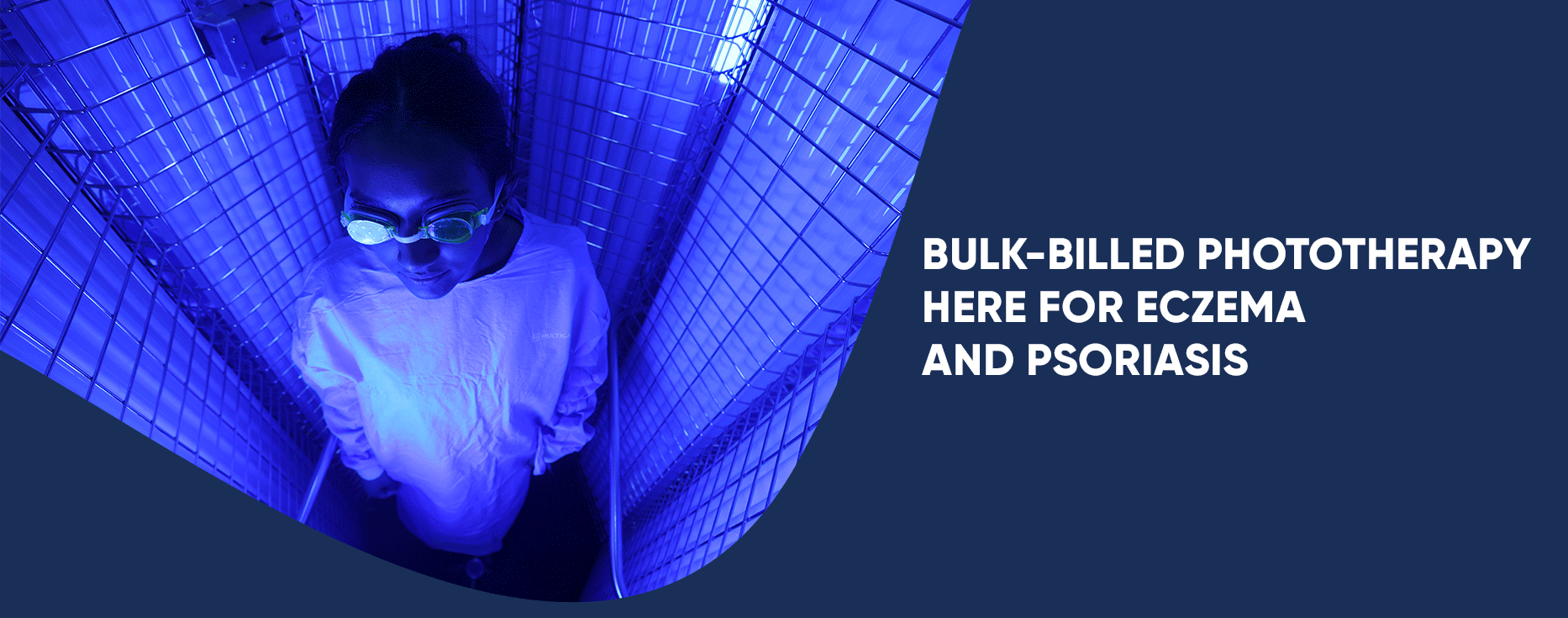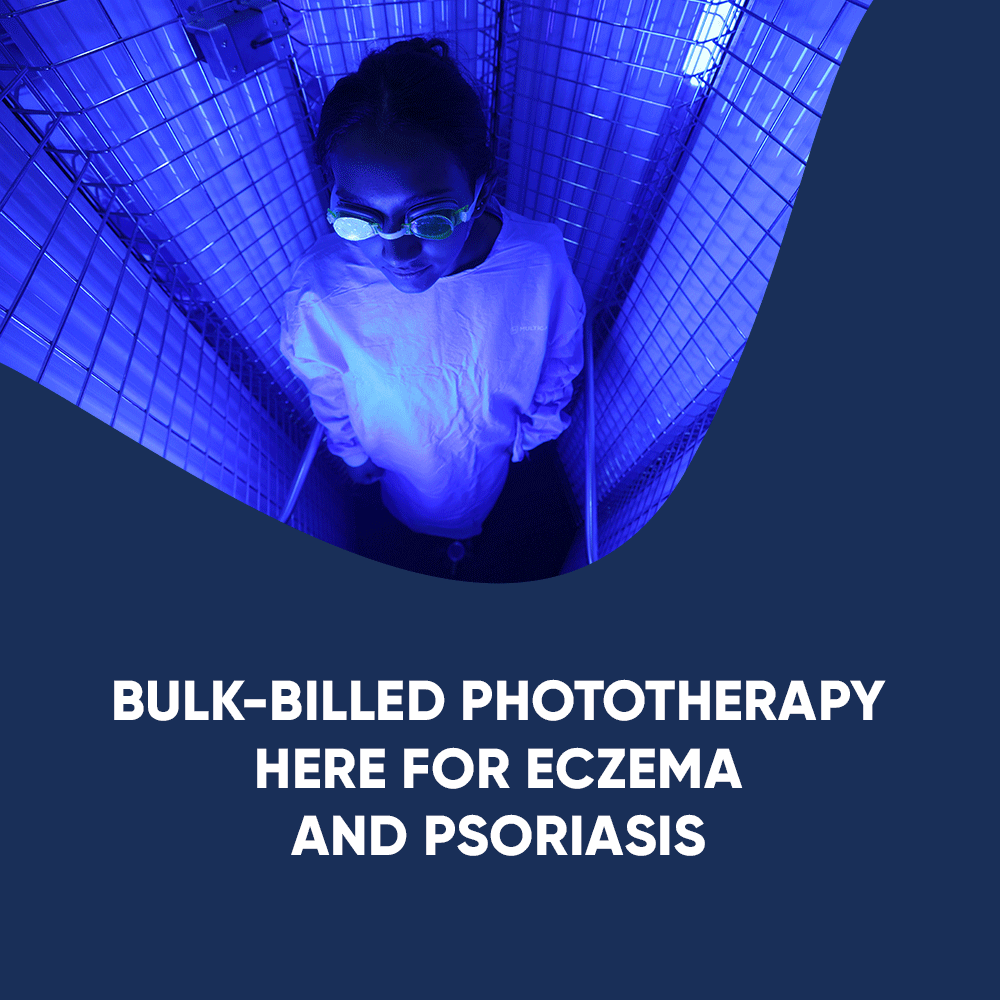Eczema


What is eczema?
Eczema or Atopic Dermatitis is a very common inflammatory disease that affects roughly one in six people in their lifetime.
Atopic Dermatitis is often considered a presentation or “symptom” of other medical issues too – and this cluster syndrome is known as “Atopic March” or “Allergic March”.
The allergic march describes the “progression” of atopic disorders, from eczema rash in young infants and toddlers, through to allergic rhinitis, food allergy, hives and asthma.
This is due to antibody responses to immunoglobulin E (IgE) and clinical symptoms that may appear in childhood and can often continue for decades, often changing with age.
Today, one in five infants have eczema and it is quite common in children below 5.
The good news is that many children grow out of their eczema, allergy and hives after puberty.
A meta-analysis including over 110,000 subjects found that while 20% of children with atopic dermatitis had persistent disease 8 years later; fewer than 5% had persistent disease 20 years later.*
Interestingly, children who develop atopic dermatitis before the age of 2 years, have a lower risk of persistent disease than those who develop atopic dermatitis later in childhood or adolescence.
Atopic dermatitis is a chronic disease that generally has a flare and remission pattern.
What are the different types of eczema?
There are several different types of eczema including
the body, especially the limbs
Contact Dermatitis – also known as allergic dermatitis. It can be brought on by
triggers such as not washing clothes before use or certain washing powders,
fabrics or chemicals that come into contact with the skin or excess
hand washing or latex gloves. A common form of eczema.
scalp and commonly the eyebrows, resulting in red, flaky skin.
and varicose veins. Often appears around the ankles.
It is possible to have more than one type of eczema on your body at the same time, and different types of eczema can impact different body parts. For instance ear eczema is often seborrheic dermatitis, face eczema often atopic eczema, and hand eczema may be dyshidrotic eczema from frequent hand washing.
What are the symptoms of eczema?
- Intensely itchy, dry, rough, flaky, inflamed, and irritated skin – this can, in some cases, flare up and then subside and then return later.
- Skin will be visually thicker in eczema patches and skin is often scaly and cracked
- The patient will typically have a strong urge to scratch their skin, including during sleep and this can severely impact sleep quality and daytime performance at school or work
- Visually noticeable patches can cause embarrassment and impact socialising.
- Pink to red patches on the skin will develop as the skin becomes more inflamed this will cause it to change colour.
- Small, raised bumps, which may crust over and leak fluid when scratched are a common aspect of eczema.
- Atopic Dermatitis may have different features in different age groups and skin types. Apart from severe itching or cracking, dryness, fissuring it can be complicated by viral and staphylococcal infection.
- This can cause yellowish pussy scabs which signal infection that can be painful more than itchy.
- Diagnosis for eczema is generally clinical and no test is needed. Patch testing should be considered in treatment resistant eczema
- Eczema sufferers tend to have skin that doesn’t “keep in” moisture very well, however scratching only creates an endless cycle that is highly frustrating and can impact sleep, performance and productivity.
- Atopic eczema usually crops up on hands, feet, ankles, wrists, neck, upper chest, eyelids, inside the bend of the elbows and knees, and in infants on the face and scalp
- Eczema can be mistaken as psoriasis, seborrheic dermatitis or contact dermatitis
What causes atopic eczema?
Inherent and genetic factors
Essentially, atopic eczema is caused by the following innate factors
- Genetics (Mum, Dad or siblings have it)
- An inability for the skin to act as a barrier
- Abnormal behaviour of the immune system (defence cells) in the skin
- Changes to the microbiome – the natural bacteria that live on the skin
Environmental factors also contribute to the development or flares of atopic eczema. These include
- Fragrance Soaps and detergents – these remove natural oils from the skin and cause drying
- Friction (eg rough, scratchy materials)
- Sweat (can be due to synthetic fabrics that do not breathe – e.g. nylon or polyester)
- Heat (too many blankets)
- Sudden drop in humidity
- Stress and anxiety
- Food allergies (more likely in babies and young children)
- Contact with an allergen – e.g. animal fur, house dust mite, grasses or pollens
- Swimming pools – chlorine and salt can both cause dryness
- Repeated “wet-dry” cycle – e.g. repetitive hand-washing or taking multiple showers on the same day
Eczema tends to run in families and often accompanies other allergic conditions including asthma and hay fever.
The Australasian Society of Clinical Immunology and Allergy has performed studies that show how many people with eczema already have hay fever, dust mite allergy or food allergy.
About 30% of infants with eczema, who have a family history of allergy will develop a food allergy, while up to 40% develop asthma and/or allergic rhinitis.
How can I prevent atopic eczema?
The best prevention is to keep your skin care routine simple so try to
- Avoid triggers where possible.
- Apply moisturiser all over the body once to twice per day. Lather heavily on eczema patches.
- Avoid scrubbing with a loofah
- Use a soap-free wash in the shower or a bath oil in the bath, for instance Cetaphil, Eucerin or QV. Ask your chemist.
- Limit bathing to a maximum of once per day and keep them short (<3 minutes) where possible and keep as lukewarm as possible.
What are the best tips for treatment of atopic dermatitis?
Otherwise, apply the moisturiser over the top of the steroid (not underneath it).
Phototherapy, narrow band UVB therapy is a light therapy used to treat mild to moderate eczema. Click here to learn more about Phototherapy.
Biological agents include:
Dupilumab/Dupixent injection
Janus kinase inhibitors such as Rinvoq(Upadacitinib)tablet, Baricitinib, Roxolitinib Cream
These are very effective for severe eczema, however may have some side effects such as injection site reaction, conjunctivitis, cold sores, dry eye, joint pain, eye itching, insomnia and upper respiratory infections, so should be monitored by your doctor or dermatologist.
Methotrexate
Azathioprine
Ciclosporin
Mycophenolate mofetil
These drugs are often prescribed for very severe forms of the condition and work by dampening the body’s immune response to allergens that trigger symptoms of eczema.
The downside of these therapies is that they were originally thought to have a significantly increased risk of skin cancer and other types of cancer such as lymphoma.
However, it is possible that patients with inherently inflammatory diseases may have this risk anyway, and studies using these drugs on patients with milder disease do not show the increased cancer risk than once thought.*
The most suitable treatment plan for your eczema depends on where your eczema is, the severity of the eczema and how it is impacting your sleep and emotional health.
How do I “wet wrap” my eczema?
- After a very quick shower, apply cortisone or creams as prescribed, to all areas affected with eczema
- Then apply moisturiser over the cortisone ointments and to the whole of the body and face.
- Wrap damp tubular bandages from the chemist around the eczema. These can be cut to size, soaked in warm water and squeezed as dry as possible first.
- As skin improves, taper off wet wrap frequency rather than stopping abruptly.
- Moisturisers should be applied 3-4 times a day otherwise the skin will become dry and itchy again.
- Do not leave the dressings on dry (unless your child is sleeping) as dry dressings can irritate the skin by causing it to become hot, dry and itchy
- Use a spray bottle of warm water to moisten bandages if needed.
Note: Do not use antiseptic bath oils in the wet dressings as these may irritate and burn your child’s skin
Watch Dr Parisa perform a wet wrap on a child with eczema here.
How do I use a cool compress for facial eczema?
Cool compressing is an ideal wet dressing for the face using wet disposable towels in a bowl of cool water and bath oil.
- Hold the towels on to the face for 5–10 minutes
- Apply moisturiser immediately after compressing
- Cool compressing should be applied as often as needed until the itch is relieved
How do I make a bleach bath for my child’s eczema?
Bleach baths can help reduce Staphylococcus aureus bacteria on the skin and improve the severity of disease.
- Fill the tub with lukewarm water.
- Then add half a cup of household bleach to water.
- Soak in the water for 10 minutes being careful not to submerge the head.
- Rinse off completely using warm water
- Apply moisturizer quickly and continue with a regular skin care routine.
Can food allergy cause atopic dermatitis?
Food allergies occasionally play a role in exacerbating eczema. Approximately 10% of children with eczema have a food allergy that aggravates their eczema, but this is much less common in adults.
Common allergens include milk, eggs, nuts, soya and wheat.
Food allergies may exacerbate atopic dermatitis, but avoidance diets do not cure the problem.
Parents should be cautioned against adopting very restrictive diets because they may be of limited benefit and may cause serious nutritional deficiencies.
Allergy may be suspected if other symptoms such as gastrointestinal upset, vomiting or diarrhoea are present.
Food allergy testing is needed if there is concern of an immediate life-threatening reaction
Sources*
Who gets eczema – dermnetnz
Use of biologics and cancer risk
What is eczema? Eczema Association of Australia
What are the symptoms of eczema?
What are the causes of eczema? Mayo Clinic
Reference: Am J Clin Dermatol 2022;23(3):355-64
Reference: Am J Clin Dermatol 2022;23(3):393-408
A research review,issue 13 ,2022


